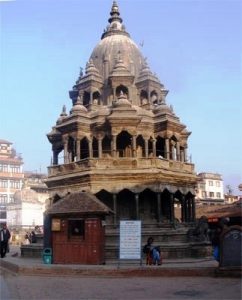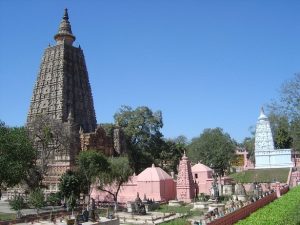
Greetings on Buddha Purnima!
Buddha Purnima (Jayanti) is a Buddhist Festival that marks Gautam Buddha’s Birth, Enlightenment and Death. It is also known as Vesak Day and celebrated all over the world by Buddhist. This year’s celebrations all over the world had a shadow of recent earthquake took place on 25th April, 2015 at Nepal. It was the most powerful disaster to strike Nepal since 1934. A strong earthquake of 7.80 to 8.30 on the Richter magnitude scale was followed by many powerful aftershocks. The earthquake hit Nepal in the area near Barpak, a mountain village between Capital Kathmandu and tourist town Pokhara. Nearly 8000 people died and many thousands are injured. Many historic buildings, temples and roads have been destroyed, resulting in loss of part of the history of Nepal. We are with Nepal in this sad moment and pay our tribute to all those who lost their lives during the earthquake and wish speedy recovery to those who are injured.

India was very quick in reacting to the call from Nepal and could extend the help in shortest possible time. During the Buddha Purnima Diwas (day) celebration, Indian Prime Minister, Hon. Mr. Narendra Modi, while greeting everyone on the auspicious occasion of Buddha Purnima, expressed that he feels sad because the country where Lord Buddha was born is going through a tough phase.

Main celebration of Buddha Purnima in India was at Bodh Gaya. Thousands of Buddhists from across the world, including the monks, celebrated Buddha Purnima at Bodh Gaya where Gautam Buddha attained Enlightenment. As per the reports received at the time of releasing this issue people lined up outside the Mahabodhi Temple for hours to offer their prayers. Mahabodhi temple is considered as a lifetime destination for millions of Buddhist across the world. According to the UNESCO, which gave it World Heritage Site status, “The Mahabodhi Temple Complex is one of the four holy sites related to the life of the Lord Buddha, and particularly to the attainment of Enlightenment. The first temple was built by Emperor Asoka in the 3rd Century B.C., and the present temple dates from the 5th or 6th centuries. It is one of the earliest Buddhist temples built entirely in brick, still standing in India, from the late Gupta period”.
Since 1590, Shaiva monks had taken care of the temple, which had been abandoned by Buddhists after the massacre of the Buddhist monks around A.D. 1192. In 1874, it was agreed, to the Burmese kings’ proposal, to re-establish the building as a Buddhist Place of Worship. But the Anglo-Burmese War and several foreign interventions did not allow completion of the project. In year 1890-92, Edwin Arnold, author of the Buddha Romance :The Light of Asia, appealed to the British-Indian Government to hand over the temple to the Buddhists, and even went to Japan to plead for diplomatic support to this demand. However, the court case was ultimately lost. Subsequently, the negotiations dragged on, involving Swami Vivekananda (1901) and Hindu Mahasabha leader Bhai Parmanand (1935) among others.
In 1922, the Indian National Congress had appointed a committee headed by Dr Rajendra Prasad to examine the issue related to the management of the Bodh Gaya Temple, who had recommended a joint management of the Temple by both the Hindus and the Buddhists as a compromise proposal which gives both Hindus and Buddhists the right to worship and an equal representation in the management committee.

After independence, in order to take care of management of Bodh Gaya Temple and its properties, the Legislature of the State of Bihar enacted the Bodh Gaya Temple Act (BGT Act), 1949, which came into force on July 6, 1949. It was just after the independence of India and Buddhism was not having significant presence in India due historical reasons. The BGT Act was amended by the Adaptation of Law Order, 1950, dated February 8, 1955. Since then, this Act has been governing the cultural, spiritual and financial affairs of one of the most sacred shrines of world without passing the Constitutional scrutiny of secularism, non-discrimination and the fundamental right of freedom of religion.
The most important governing section under BGT Act is Section 3, which empowers the State Government to constitute a nine-member temple management committee, consisting of a Chairman, and four Buddhists and four Hindus, including the Mahanth of Bodh Gaya. It imposes the condition that the Mahanth must be a Hindu. In the event that the Mahanth is unable to fulfill his duties, only another Hindu member can replace him. The act gives hereditary membership to Saivite Mahant and his successors in Bodh Gaya Temple Management Committee. It is very painful to note that the Mahabodhi Temple has been under virtual control of Hindus for centuries now.
In July 2013, the Bihar Government has amended the Bodh Gaya Temple Act of 1949, allowing for a non-Hindu to head the temple committee. As per Section 3 (3) of the Act, the District Magistrate (DM) is the ex-officio chairman of the temple committee and has to be a Hindu. If the DM is a non-Hindu, the Act requires the government to nominate a Hindu as Chairman of the committee for the period during which the DM is a non-Hindu. As per the Bodh Gaya Temple (Amendment) Bill, 2013, it is provided now that a Non-Hindu can be a chairman of the committee on pretext that the DM is a representative of the government’s secular credentials. Practically, it is very rare to have Buddhist DM in Bihar State and therefore Bodh Gaya Temple (Amendment) Bill, 2013, becomes just a political gimmick and does not make any change in the management of the temple. The Buddhist, over six decades, has been demanding to amend the Bodh Gaya Temple Act of 1949, allowing Buddhist to be majority on the committee so that the management of the temple can be with the Buddhist in similar lines with other shrines in the country which are managed and controlled by the members of the respective religion. A petition seeking transfer of exclusive rights to the Buddhist from the State Government has been admitted by Supreme Court in 2012, which is still pending. State Government of Bihar has always taken a stand that there is no need to alter it as long as the temple management is properly handled by the committee comprising four members each of Hindu and Buddhist communities.
Of Course the Buddhist from all over the world knows that the temple is not managed as it should have been and it is of utmost importance to have complete control with the Buddhist so that it can be managed in Buddhist way and Hindu dominance is removed.
On July 7, 2013, Mahabodhi Temple at Bodh Gaya witnessed a series of low-intensity blasts and security of the temple became a matter of great concern to Buddhist all over the world. In case the management of the Temple is with Buddhist, more care can be taken to protect the Mahabodhi Temple by the Buddhist who has genuine concern for the temple.
References
- http://www.countercurrents.org/chaudhary240711.htm
- http://www.mahabodhi.com/temple_act.pdf
- http://www.rediff.com/news/report/sc-issues-notices-in-maha-bodhi-temple-case/20120217.htm
- http://www.milligazette.com/news/9071-mahabodhi-temple-act-amended
- http://koenraadelst.bharatvani.org/books/acat/ch3.htm
- http://archive.indianexpress.com/news/bihar-moves-to-amend-bodhgaya-temple-act/1135911/
- http://timesofindia.indiatimes.com/india/Supreme-Court-admits-Buddhists-plea-to-manage-Mahabodhi-Temple-at-Bodh-Gaya/articleshow/16497830.cms
- http://www.thehindu.com/news/national/other-states/amendment-allows-nonhindu-to-head-bodh-gaya-temple-committee/article4974856.ece
- http://www.hindustantimes.com/patna/non-hindus-can-chair-bodh-gaya-temple-management-committee-now/article1-1100893.aspx
- http://www.srilankaguardian.org/2012/10/bodh-gaya-hindu-response.html
- http://www.telegraphindia.com/1130730/jsp/bihar/story_17170043.jsp#.VU95Q46qpHw
- http://www.mahabodhi.com/Committee/committee.html
- http://ncm.nic.in/pdf/Tour%20Report%20of%20BodhGAya%20and%20Patna%20from%2030th%20December%20-%203rd%20January,%202010.pdf
- http://www.buddhistchannel.tv/index.php?id=42,10804,0,0,1,0#.VU-DDo6qpHw
- http://www.rootinstitute.com/bodhgaya_stupa/bodhgaya_stupa_history.html
- http://www.bihartimes.in/Newsbihar/2013/July/newsbihar30July7.html
- http://dbsjeyaraj.com/dbsj/archives/22629
- http://www.firstpost.com/india/sc-seeks-centre-bihar-govt-response-to-pil-on-mahabodhi-temple-1137937.html
- http://timesofindia.indiatimes.com/india/Terror-strikes-Bodh-Gaya-serial-blasts-rock-Mahabodhi-Temple/articleshow/20953906.cms
